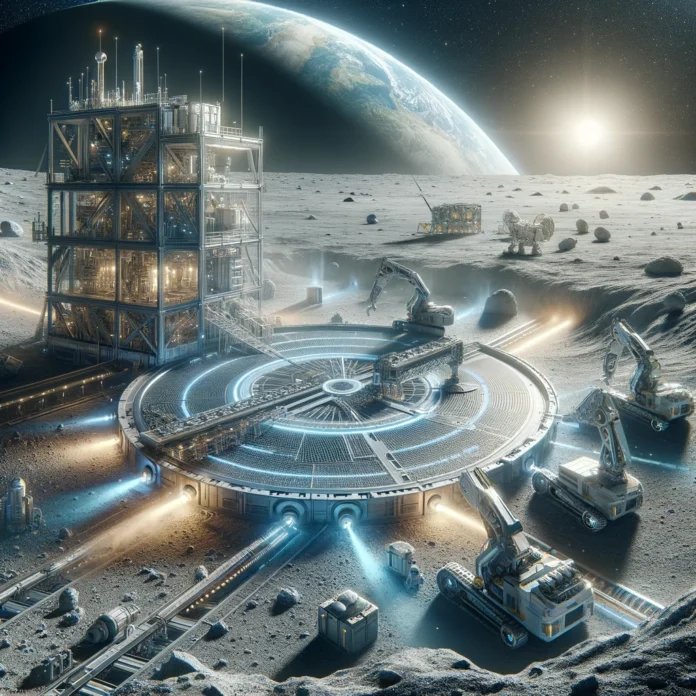Building landing and launch pads on the Moon is a critical step in establishing a sustainable human presence beyond Earth. The unique challenges of the lunar environment, such as low gravity, lack of atmosphere, and abrasive lunar dust, require innovative solutions to ensure the safety and efficiency of lunar missions.
Utilizing Lunar Resources: The Key to Construction
One of the most promising approaches to building lunar infrastructure is In-Situ Resource Utilization (ISRU), which involves using materials found on the Moon to construct necessary facilities. Lunar regolith, the loose, fragmented material on the Moon’s surface, can be heated with microwaves to create a molten ceramic that solidifies into a stable structure—a process known as sintering. This method is particularly useful for constructing high-temperature zones on landing pads, where the intense heat from rocket engines could otherwise damage the surface.
Alternatives: Lunarcrete and 3D Printing
Another method under consideration is the combination of polymer binders with lunar regolith to create a material known as ‘lunarcrete.’ This method could be a viable option if transportation costs from Earth to the Moon decrease significantly. Additionally, advancements in 3D printing technology allow for the layering of these materials, enabling the rapid construction of landing pads with minimal human intervention. These techniques are being explored to determine the most cost-effective and efficient way to build durable infrastructure on the Moon.
The Artemis Program and Future Exploration
NASA and other space agencies are deeply involved in researching these technologies as part of their lunar exploration goals, particularly under the Artemis program. The development of reliable landing and launch pads is essential for sustaining long-term human presence on the Moon. These pads will facilitate not only human missions but also the construction of lunar bases and other critical infrastructure for future deep space exploration.
The combination of ISRU, advanced materials like lunarcrete, and 3D printing technologies is expected to make lunar construction more feasible and economically viable. As these innovations continue to develop, they will pave the way for humanity’s return to the Moon and the establishment of permanent lunar outposts.


